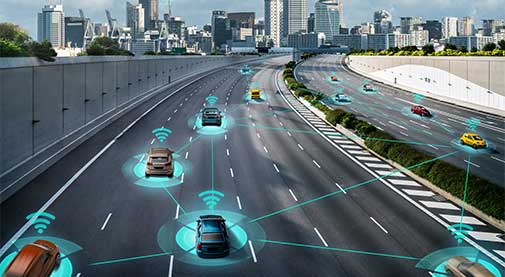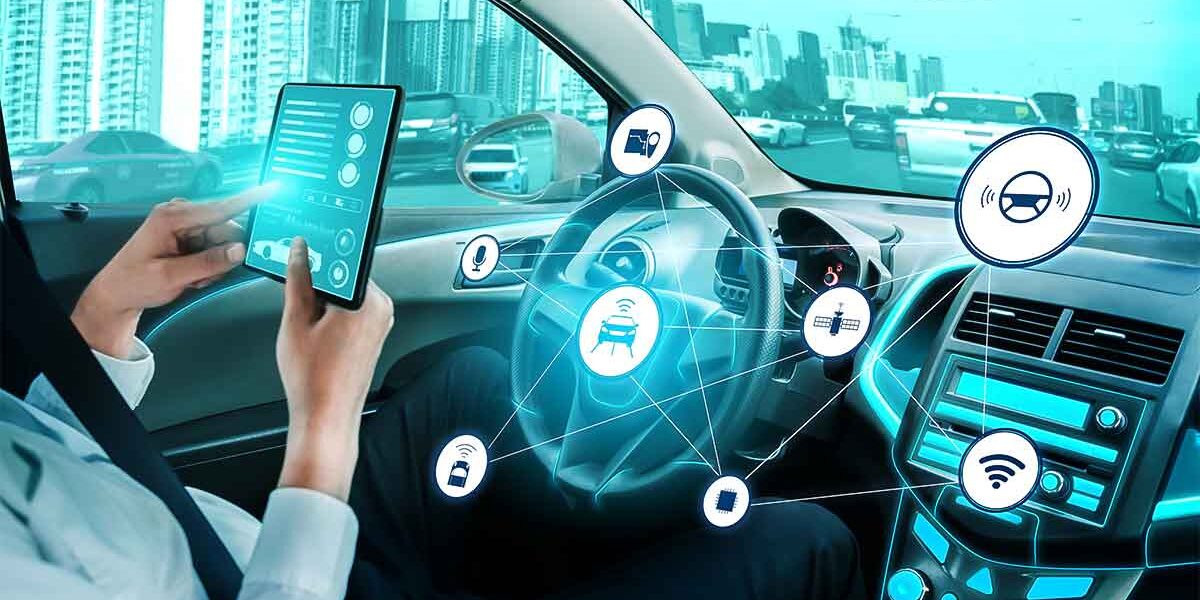According to GlobeNewswire’s independent market research, “Automotive IoT Market by Platform-Global Forecast to 2025,” the automotive IoT market will develop at a CAGR of 16.4% from 2019 to 2025, reaching $541.73 billion.
The automobile sector is attempting to scale up its potential with IoT, moving from products to the age of service and experience, from functionality to information as the key object of value creation, and from warehouses to intricately networked systems.
What is the Internet of Things (IoT)?
The Internet of Things, or IoT, refers to billions of physical objects connected to the internet that all collect and share data without human interaction. IoT solutions define the new automotive age in various ways, including car-to-car communication and sophisticated fleet management.
The Core Role of IoT in the Automotive Industry
IoT connectivity, smart sensors and gadgets, edge computing, mobile apps, and cloud services will all change the way you interact with and use your cars. Implementing IoT applications in the automobile industry aids in the design, which improves performance, lowers costs and allows for quality control.
With Industry 4.0 paving the way for IoT and AI, the possibilities for IoT applications in automotive are endless.
Top Five Applications of IoT in the Automobile Industry
The automotive industry is developing innovative and advanced IoT solutions, such as connected car solutions, Advanced Driver Assistance Systems (ADAS), in-vehicle infotainment systems, navigation & telematics solutions, predictive maintenance solutions, Vehicle-to-Vehicle (V2V) applications, Vehicle-to-Infrastructure (V2I) applications, and Vehicle-to-Everything (V2X) communications. Take a look at some of the IoT automotive applications.
Fleet and Driver Management
The fleet management solution is the most recent IoT use case in the automotive industry. It takes advantage of IoT to provide fleet operators with a variety of benefits throughout their lives. Compliance with environmental and safety regulations is the key benefit of IoT solutions in automotive, optimizing maintenance and logistics to monitor driver performance. Vehicle tracking, monitoring fuel usage, sharing statistics about a driver’s health and performance, sending idle notifications, preventive maintenance, and integrating a solution for service condition monitoring are all examples of IoT in fleet management applications.
IoT sensors installed in automobiles deliver signals and trigger warning alarms for low battery, coolant temperature, and engine maintenance with dependable access to cellular networks through multiple networks such as 2G, 3G, and 4G/LTE. IoT technologies in the automobile industry enable fleet management to automate numerous procedures, including trip planning. Furthermore, this aids the fleet management industry to increase customer satisfaction by ensuring on-time delivery and great service quality.
Real-Time Vehicle Telematics

Vehicle telematics allows tracking a vehicle’s location, movement, status, and behavior within a fleet. The smart cloud-connected IoTboxes on automobiles that connect telematics devices give real-time data on vehicle state, driver health, and transportation optimization. This is a key increase of IoT in the automotive industry.
Vehicles can be augmented with electronics, connections, and hardware that allow them to talk and interact with other devices when IoT and telematics are combined.
Remote access to vehicle operating information, remote vehicle speed limit controls, and turn-by-turn navigation with augmented 3rd-party in-car navigation are advantages of employing telematics.
Cellular Vehicle to Everything (CV2X)
These services, including real-time traffic flow statistics, mapping, infotainment, and remote access to emergency services, require connectivity. A Cellular Vehicle to Everything network connects cars in the IoT use case in automotive (CV2X). Device-to-device and device-to-network are the two modes of operation for C-V2X.
Vehicle-to-vehicle (V2V), vehicle-to-infrastructure (V2I), and vehicle-to-pedestrian (V2P) communications are all possible with device-to-device (V2P). Through advances like collision avoidance, sharing data about speed, position, a route over a single network, and alerting the driver about traffic signal priority/timing, V2V, V2I, and V2P connect the highway to pedestrians and cyclists possible.
Device-to-network (D2N) communication over cellular networks is supported, allowing cloud services, as well as real-time traffic reporting and routing, to be included in these end-to-end systems.
IoT-based Predictive maintenance.
Data collection and analytics are enabled by combining big data, cloud computing, edge computing, and sensors. Predictive technology based on IoT connectivity tools collects data on a vehicle’s part performance. It assesses the vehicle’s risk of malfunction, sends the data to the cloud, and warns the user, decreasing breaks and facilitating maintenance.
The following are the primary benefits of Automotive IoT solutions with predictive maintenance.
- Identify any potential parts failures before they happen.
- Calculate the remaining usable life and possible repairs up to a 75 percent reduction in price.
- Temperature, speed, electrical system, and navigation route are all characteristics that are measured.
- Operational expenditures are reduced while safety is improved.
In-vehicle Infotainment
From auto navigation to telematics to entertainment, smart apps and mobile networks provide a wide spectrum of infotainment in vehicles. Specifically, Google and Apple partner with as many car manufacturers as possible to bring IoT use cases like in-vehicle infotainment to life. Google Maps for navigation, Google Assistant for hands-free driving assistance, and Apple Carplay for high-end automobile infotainment are just a few examples. The automobile is now available on the owner’s smartphone, with a connected network authenticating the car to open, close, and self-start.
Future of IoT in the Automobile Industry
The Internet of Things (IoT) is the DNA of next-generation automobiles. You have your vehicle in your pocket for the time being. You can adjust and monitor your vehicle’s statistics with a simple swipe on the app. Furthermore, according to a Business Insider projection, $267 billion will be spent on Automotive IoT use cases. IoT solutions and Wi-Fi capabilities backed by 3G/4G/5G technology are ushering in a new era in automotive, allowing for more implementation. All autonomous vehicles will be available soon.



